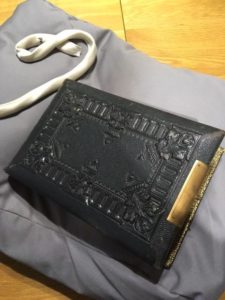Volunteer Debbie Scott takes us on a tour of London’s many archives, including LSE, Museum of London, Britsh Library, London Met Archives, Bishopsgate and Tower Hamlets Local Archives.
I’m familiar with using the Tower Hamlets archive from researching my family history, so I know the procedures. I like the way it is laid out, providing easy access to directories and microfiche, although I always have to be reminded about how to use the machines. It is always well staffed, and the librarians are helpful. Doing this project I learnt some extra tips from them, such as how to select a map and how to identify the district number on Ancestry. I was also advised that Find My Past is better for searching specific streets, which I did at the British Library. Again, I have membership but had never ordered books before, so I took the opportunity to read some books which are hard to find, and consult others which are too expensive to buy. In the 70 minute wait for the books, I accessed Times Digital and British Newspapers Online to confirm facts and for some juicy snippets! It’s all a bit baffling but help is available.
I joined the LSE but was disappointed as I couldn’t find the books I needed. They should have been on the open shelves but some were not available or misplaced. I had to return to the Librarian on bottom floor, but even she couldn’t find them.
The best experience was viewing original material.
I wanted to view original court records at the London Metropolitan Archives, which I have also visited before but this was the first time I’d enquired beforehand. The librarian sent me the catalogue numbers and I made an impromptu visit, confident I could pop in. ..but my membership had expired. Luckily, I looked trustworthy and they renewed it. I made a materials request then spent 20 minutes dawdling in the exhibition. The tatty originals were handed to me in the archive room, separated from the public area. Although it was fascinating to handle them they didn’t yield up any new clues. I was hoping to find addresses. I was tempted to photograph the scrawled pages but it would have cost me £5.
Having researched Adelaide Knight, I was keen to see the original Canning Town WSPU minutes held at the Museum of London. I arranged a visit via email and although the archivist couldn’t be there, she made sure the relevant material was available on the day I visited. I was met at the front desk and taken through a warren of corridors to the archive library . Left alone with the CT minutes book and a scrap book of cuttings, letters, summonses etc, I was in heaven. Though not thoroughly indexed, the scrap book was a gold mine! Originals from J Sbarboro and M Baldock plus letters concerning the Cavendish sq incident they were involved in. I filled in a photo permission form and snapped away, then got absorbed in a brilliant letter by Kitty Marion, whom I determined to researcher further. The CT minutes (1906-7)provided a picture of the change in nature of meetings: from formal, to planning trips, to tailing off. There was no record of the departure of A.K. but there was an insight into the mutual support of the local organisations and how they promoted meetings and the women’s cause. I photographed some pages that showed the feistiness of the women , some as evidence and some that made me laugh. I hope to go back and spend more time interrogating its treasures and I’m looking forward to delving again into Bishopsgate Institute’s basement as the tour was so wacky.


 Another hour slips by as I fall down a rabbit hole of the compiled notes of a previous researcher writing a book on Morris’ embroidery. I get lost in her narrative; her endless letters, the slow and fruitless responses, the sudden burst of activity. The final product. I remember too late that her focus is not the same as mine, but still I have found some revealing passages. I put the box away.
Another hour slips by as I fall down a rabbit hole of the compiled notes of a previous researcher writing a book on Morris’ embroidery. I get lost in her narrative; her endless letters, the slow and fruitless responses, the sudden burst of activity. The final product. I remember too late that her focus is not the same as mine, but still I have found some revealing passages. I put the box away.